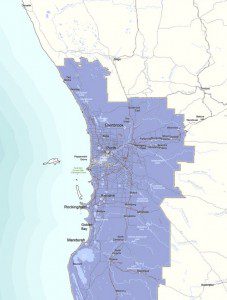What drives change?
 Last week, I attended a forum run by Economic Development Australia (EDA, of which I am a member) and Regional Development Australia (RDA), entitled “Driving Change in Our Cities; Integrated Investment Priorities Plan for Perth & Peel”, at the University of Western Australia. The Perth & Peel Economic Development Strategy & Infrastructure Priorities project is an initiative of EDA and RDA that seeks to bring a “coherent and coordinated approach and vision for the future economy of Perth”.
Last week, I attended a forum run by Economic Development Australia (EDA, of which I am a member) and Regional Development Australia (RDA), entitled “Driving Change in Our Cities; Integrated Investment Priorities Plan for Perth & Peel”, at the University of Western Australia. The Perth & Peel Economic Development Strategy & Infrastructure Priorities project is an initiative of EDA and RDA that seeks to bring a “coherent and coordinated approach and vision for the future economy of Perth”.
The goal of the initiative is “a joined up investment plan for Perth and Peel integrating State Government Development Frameworks, Private Sector Blueprints, State Government Strategies and Local Government Master Plans”. Does this sound a little overwhelming? I’ll return to this point.
The keynote speaker at the forum was Bernard Salt, a KPMG Partner and demographer. Salt spoke eloquently about the ways in which demographic changes have driven development in Australia over the last fifty years. Presentation available HERE. Indeed, the key message of his talk was a direct response to the title of the forum: demographic change is driving change in our cities. He made the point that planners need to pay attention to the changes of the past and projections for the future in order to ensure there is adequate infrastructure to accommodate these demographic changes and service the community and its businesses. The challenge of how to pay for the infrastructure we need was highlighted –– while the 140km urban stretch of the Peel and Perth area is similar to Los Angeles, there are significantly fewer tax-payers.
Demographic changes drive the development of markets and the demand for services. Obviously, there are employment demands that correspond to these changes and along with this an increasing need for education and health services, and a range of infrastructure, including IT. Despite this, it was fascinating to see how little attention was given at the forum to the issues that will actually drive change in the city, such as its economic and employment base.
Bernard Salt’s presentation was followed by a work-in-progress presentation by the consultants (AEC Group) working on the Perth & Peel Economic Development Strategy & Infrastructure Priorities project. This was followed by a panel session made up of various representatives from local and state government and business. What struck me about the forum, and in particular this discussion, was how bogged down it became into issues of bureaucratic planning. Development frameworks, blueprints, strategies, master plans… These are all instruments used by governments to present a prioritised approach to dealing with urban planning and development. But let’s be clear: these plans don’t “drive change in our cities”. They respond and anticipate change.
The panel members spoke of the need for vision, for collaboration across the different levels of government and the need for partnership. But the conversation quickly turned to the problems they face in doing this. I was struck by a sense that many of these actors can’t look beyond their planning frameworks to focus on what is most important.
And what is most important? Planning certainly has a role to play and good plans and strategies can stimulate change and respond quickly and coherently to emerging trends and challenges. However, development in our cities is driven by economic growth and, along with it, jobs. To drive change, we need to create the conditions for economic growth and bring various actors together. While plans are important, they are worthless without JUICE.
By juice I mean the kinds of things that make a regional economy dynamic and competitive. Infrastructure and services are a part of this, but often overlooked are the networks and interactions between different actors in society and the creation of a culture of entrepreneurship and innovation. When I look at successful economies I see more than good plans. I see regular and diverse interactions between people. I see good business representation, a series of local events that bring people together to think about new business ideas, to link nascent businesses with capital and foster risk-taking, new ideas and new ventures. I also see governments and business organisations — and local education and training institutions — that have a thorough understanding of the value chains that make up the local economy. This is complemented by a recognition of those who are already players in the economy — from major employers to small-scale innovators –– and a willingness to discuss with these people what they need to do better. Building on our assets rather than continually looking for salvation from an outside investor.
I joked with friends recently that we need a juice factory –– some ways of developing the soft infrastructure that is necessary to drive a more diverse, competitive and vibrant economy. State and local government agencies need to focus on infrastructure, but their role extends beyond this. Let’s not forget that sustainable economic growth is driven by the people who make up our cities.